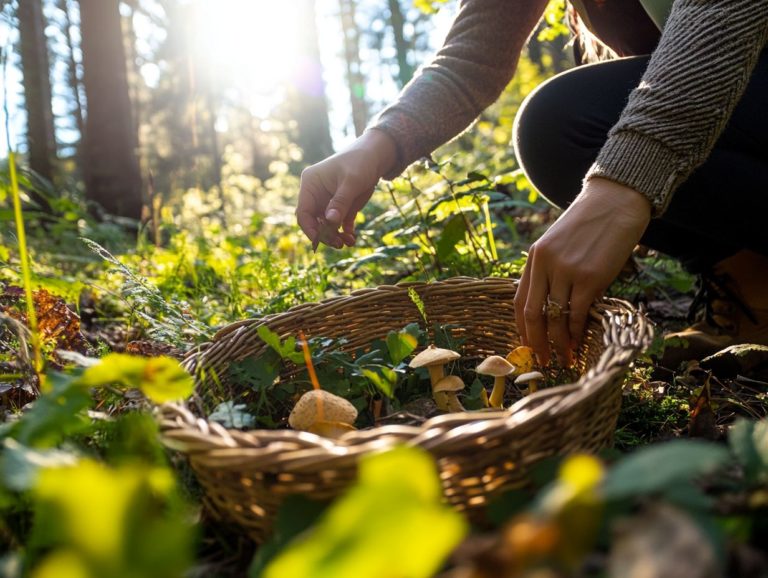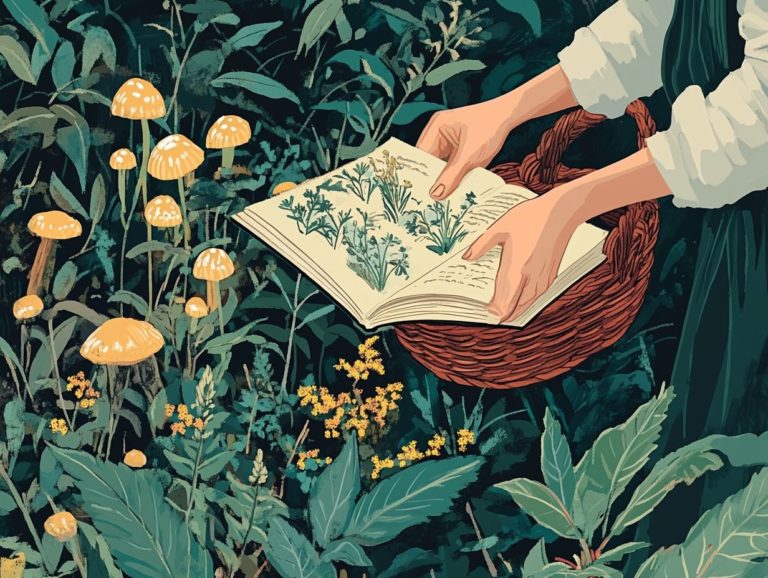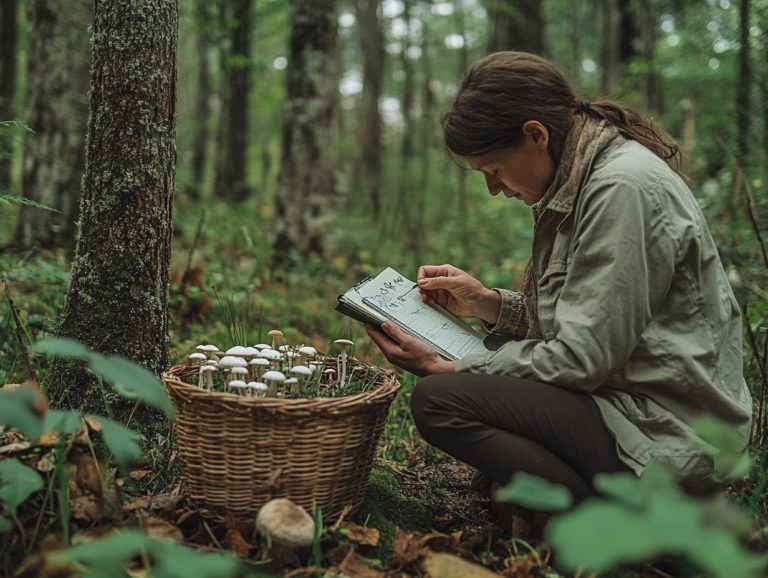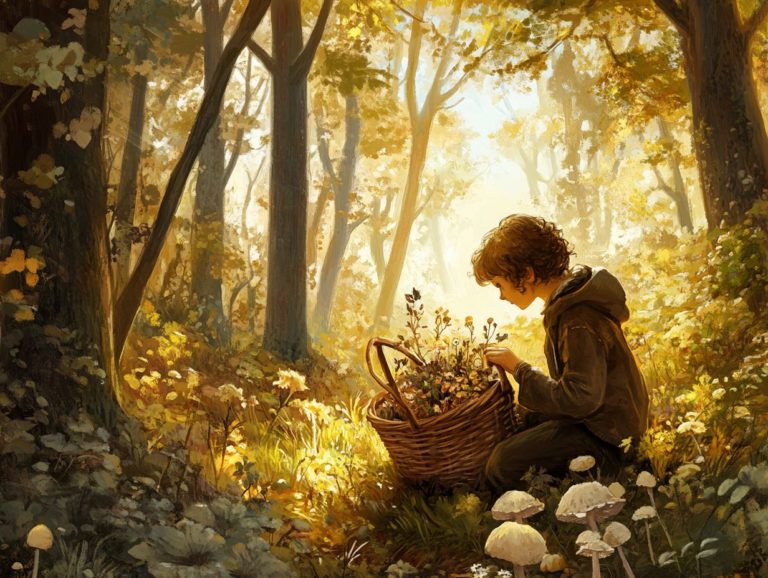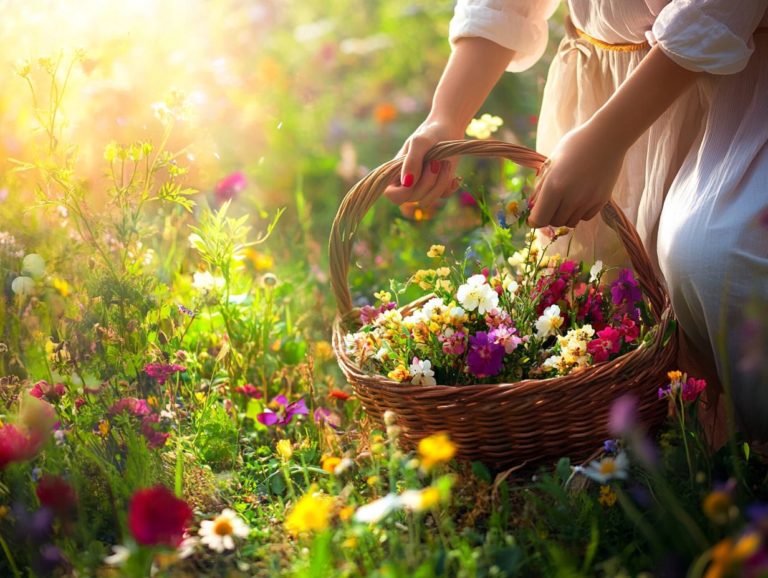How to Preserve Your Foraging Finds
Dive into the world of foraging and discover the incredible flavors waiting for you! Foraging presents you with a unique opportunity to connect with nature, unveiling a treasure trove of edible plants, mushrooms, and herbs that may be hiding right in your backyard.
It s not just about the thrill of the hunt. Foraging brings a wealth of nutritional and environmental benefits, enriching your diet while deepening your appreciation for local ecosystems.
This guide will equip you with the essentials of foraging. You ll learn about preserving your finds, steering clear of common pitfalls, and creatively incorporating these wild ingredients into your meals.
Embark on this journey to elevate your culinary adventures and fully embrace the bountiful gifts that nature has to offer.
Contents
- Key Takeaways:
- Benefits of Foraging
- Preserving Your Foraging Finds
- Common Mistakes to Avoid
- Storage and Shelf Life
- Creative Ways to Use Foraged Foods
- Watch Our Foraging Tips
- Frequently Asked Questions
- What is foraging and why is it important?
- How do I properly preserve my foraging finds?
- What items can I forage and preserve?
- Do I need any special equipment to preserve my foraging finds?
- How long can I store my preserved foraging finds?
- Are there any safety precautions I should take when preserving foraging finds?
Key Takeaways:
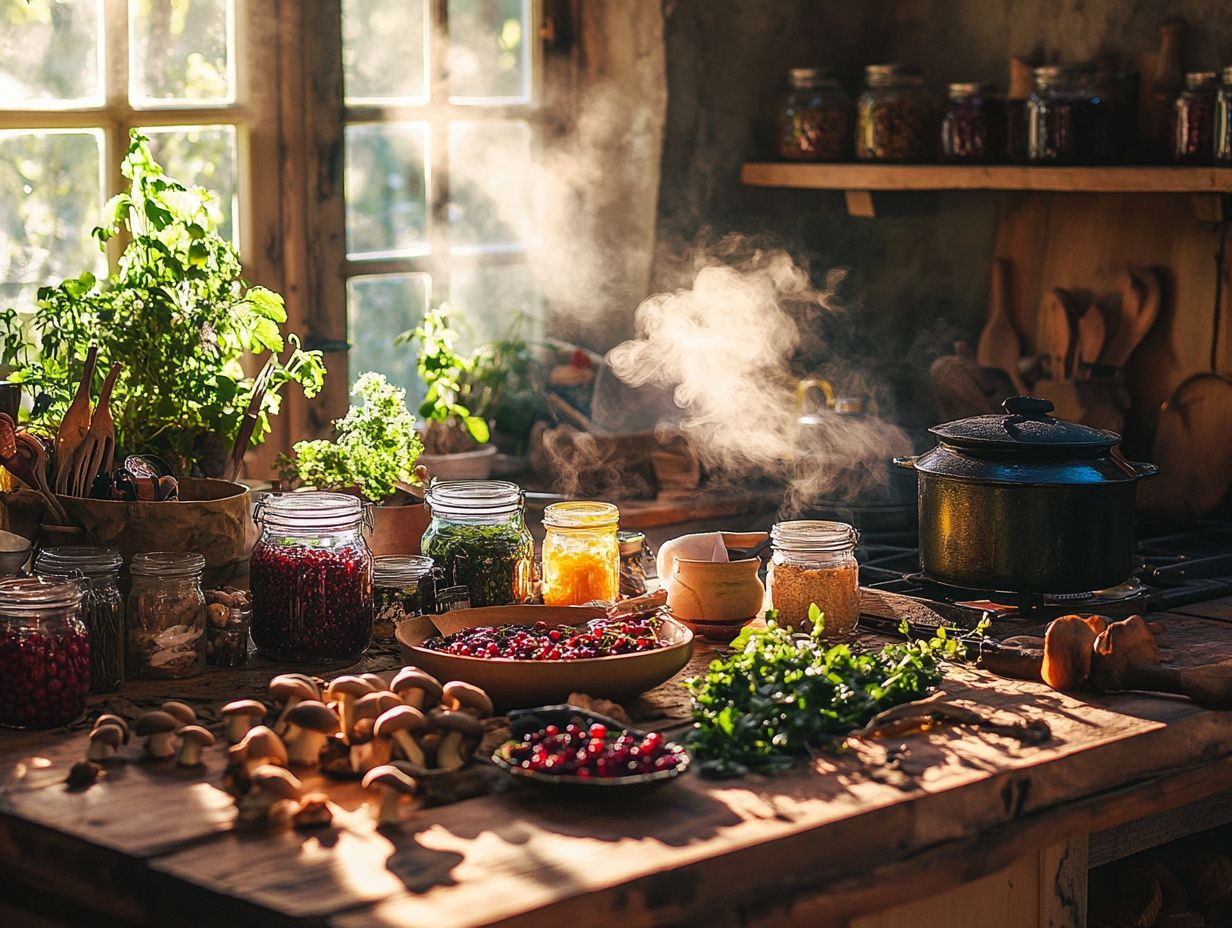
- Preserving foraged foods lets you enjoy them longer.
- Avoid contamination by following proper storage methods.
- Get creative! Use foraged foods in jams, pickles, and infused oils.
What is Foraging?
Foraging is the art of seeking out and gathering wild plants, herbs, fruits, and other natural treasures right in your own backyard. This sustainable practice creates a profound connection to nature, encourages seasonal living, and nurtures a personal relationship with the environment. It also allows you to explore the remarkable flavors of wild edibles.
Historically, foraging has served as an essential survival skill, passed down through generations as a source of nourishment and healing. Today, you may find yourself drawn to this ancient practice, captivated by the thrill of uncovering diverse edible plants like dandelion greens, ramps, and wild berries that flourish in your surroundings.
Gaining an understanding of local ecosystems is vital. It fosters a deep respect for biodiversity, meaning the variety of life in a particular habitat, and highlights the significant roles various species play within their habitats. Engaging in the learning process whether through workshops or community groups enriches your knowledge of sustainable practices. This enables you to harvest responsibly, ensuring that these precious natural resources remain plentiful for generations to come.
Benefits of Foraging
Foraging presents a wealth of advantages. By tapping into fresh, wild food, you significantly enhance your nutritional intake.
Engaging in foraging has a positive environmental impact, championing sustainable practices that contribute to the preservation of local ecosystems.
Nutritional and Environmental Benefits
The nutritional benefits of foraging go beyond simply gathering fresh produce. Wild nutrition often encompasses a rich array of vitamins and minerals that cultivated foods might lack, all while supporting environmental health through the sustainable harvesting of wild fruits and edibles.
Take elderberries, for example. They are packed with vitamins C and A, and their impressive antioxidant properties provide robust immune support, making them an invaluable addition to your diet. Similarly, blackberries deliver a significant dose of dietary fiber along with essential vitamins like K and E, which play a key role in promoting overall gut health.
By foraging for these wild plants, you not only gain access to these nutritional gems but also contribute to the maintenance of ecological balance by fostering biodiversity. This ancient practice encourages a deeper appreciation of local ecosystems, motivating you to respect and protect your natural resources.
Preserving Your Foraging Finds
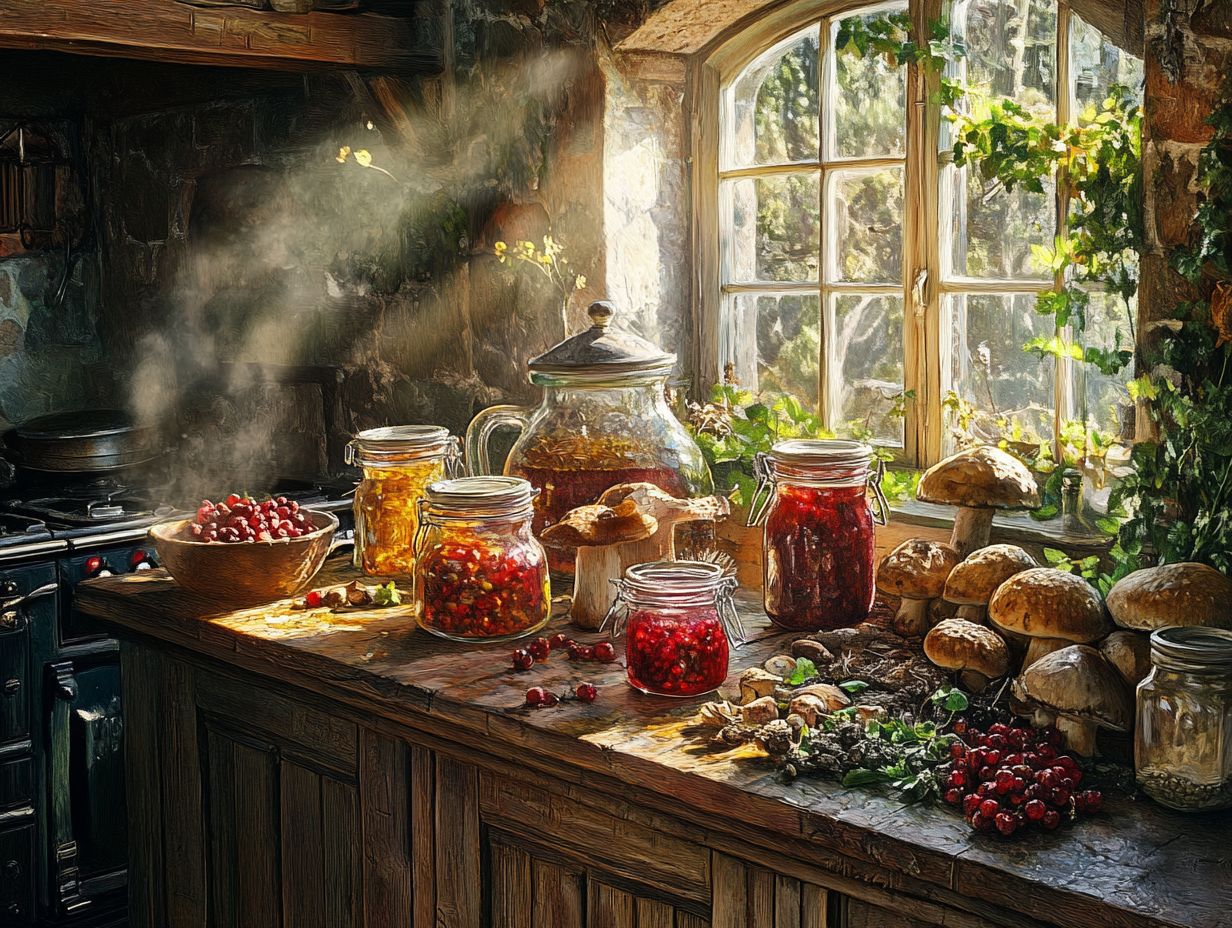
Preserving your foraged finds is crucial for savoring wild ingredients year-round. By employing methods like canning, fermenting, dehydrating, and salting, you can expertly extend the shelf life of those seasonal treasures. To enhance your skills, it’s important to follow the dos and don’ts of foraging, ensuring they remain a delightful part of your culinary repertoire.
Methods for Preserving Foraged Foods
Canning, fermenting, dehydrating, and salting are effective methods for preserving foraged foods. These techniques extend the shelf life and make your foraged foods burst with flavor! By learning how to use foraged ingredients in cooking, you can curate a wild pantry filled with seasonal treasures to savor throughout the year.
These methods not only prolong the life of wild greens and fruits but also enhance their flavors and nutritional value. For instance, canning can develop rich tastes in your preserves, while fermentation introduces beneficial probiotics, which are good bacteria that support gut health. Dehydrating concentrates the essence of foraged foods, turning them into snacks or versatile cooking ingredients. Salting adds depth that complements a wide range of dishes.
Each method has unique advantages and specific steps, inviting you to explore diverse cooking experiences while embracing sustainable practices.
Common Mistakes to Avoid
When foraging, always prioritize safety to enjoy the wild’s offerings confidently. Be mindful of common pitfalls that can lead to spoilage and contamination.
Preventing Spoilage and Contamination
To prevent spoilage and contamination of foraged foods, grasp the essential handling, storage, and preparation methods. Learning how to use foraging techniques in cooking ensures that your wild ingredients remain safe to consume.
Embrace best practices, like washing your foraged treasures thoroughly to eliminate dirt and potential pathogens. This can significantly reduce the risk of harmful bacteria. To enhance your foraging experience, consider following the top 5 tips for successful foraging. Store these goodies in clean, dry containers to avoid moisture-related spoilage, and pay attention to cooking temperatures to effectively eliminate any contaminants.
Stay vigilant about poisonous look-alikes and familiarize yourself with local flora. This adds an essential safety layer to your foraging adventures, ensuring that the bounty you collect is delightful and safe for your table.
Storage and Shelf Life
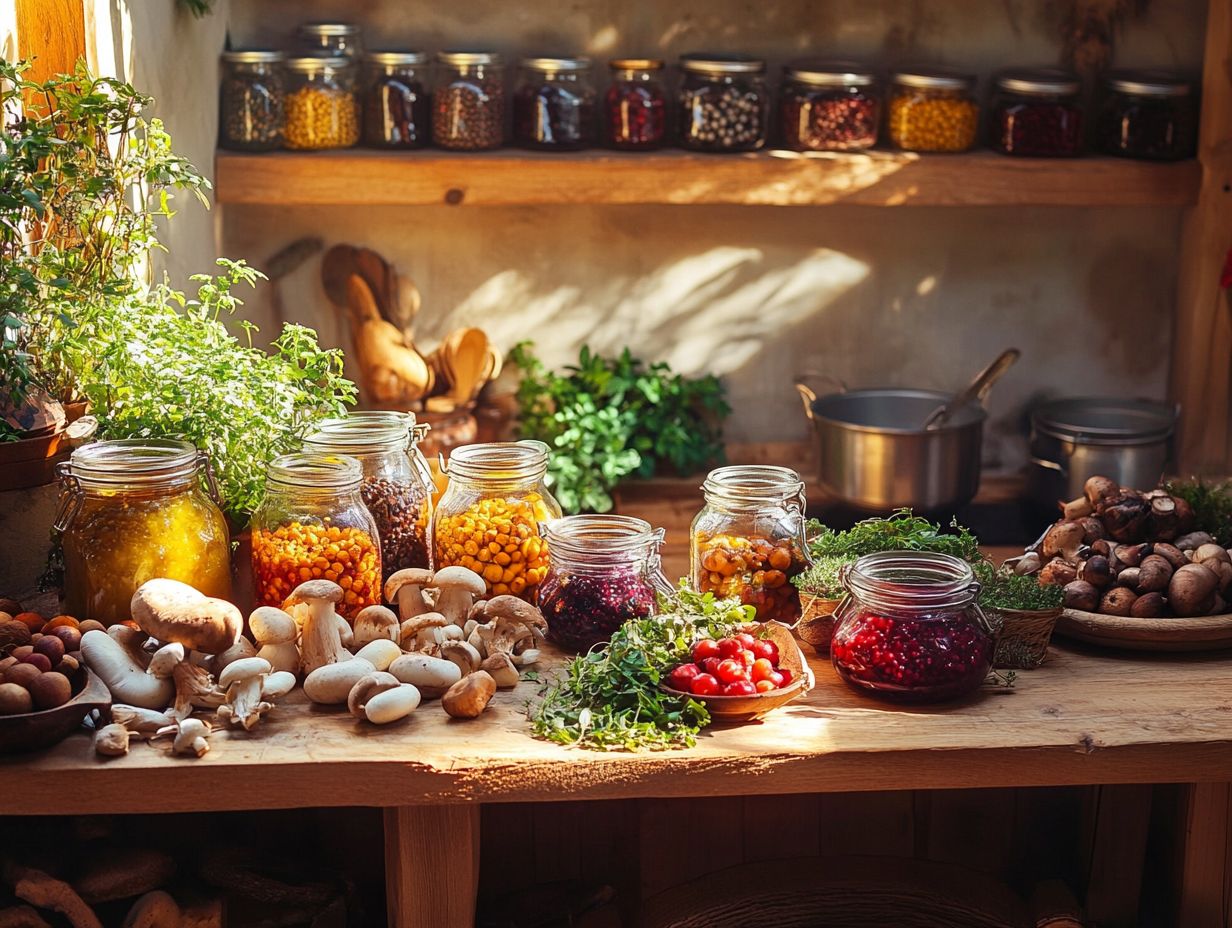
Understanding optimal storage practices and the shelf life of foraged foods is crucial for maximizing their usability. For more information, check out summer foraging essentials to ensure your wild edibles stay fresh and safe for consumption well beyond the harvest season.
Best Practices for Storing Foraged Foods
Best practices for storing foraged foods vary by the type of wild edibles you have, and knowing how to use local resources for sustainable foraging can guide you in determining whether they thrive best in refrigeration, freezing, or long-term preservation methods.
For example, leafy greens and tender herbs flourish in cool, humid environments, making refrigeration ideal for keeping their crispness and flavor intact. In contrast, hearty vegetables and mushrooms often benefit from quick blanching before freezing to preserve their texture and nutritional value. Techniques like drying and fermenting are excellent long-term options for items such as berries and roots.
Understanding the specific temperature and humidity requirements for each type of wild edible is essential. This ensures that all your foraged treasures retain their delightful qualities until you’re ready to enjoy them.
Creative Ways to Use Foraged Foods
Incorporating foraged foods into your meals is a delightful opportunity to explore the distinctive flavors and health advantages wild ingredients offer. Imagine creating exquisite jam recipes using wild fruit or enhancing your dishes with the medicinal properties of carefully selected herbs.
Each foraged element enriches your cooking experiences and connects you to nature’s bounty in a remarkable way.
Recipes and Ideas for Incorporating Foraged Foods into Meals
Creative recipes for incorporating foraged foods into your meals can truly transform your dining experience. Imagine savory dishes that celebrate wild greens or sweet delights like elderberry jam, showcasing the impressive versatility of these natural ingredients.
Explore your local landscape, and discover a treasure chest of wild fruits, mushrooms, and herbs waiting to elevate your culinary creations. For example, adding dandelion greens to a vibrant salad not only introduces a unique flavor but also provides a healthy boost.
With tips on safe foraging and straightforward preservation methods, you can craft delightful, one-of-a-kind dishes that reflect the bounty of your surroundings. Learn how to use foraging in culinary arts to transform simple meals into extraordinary culinary adventures that embody the spirit of nature’s wave.
Watch Our Foraging Tips
Frequently Asked Questions
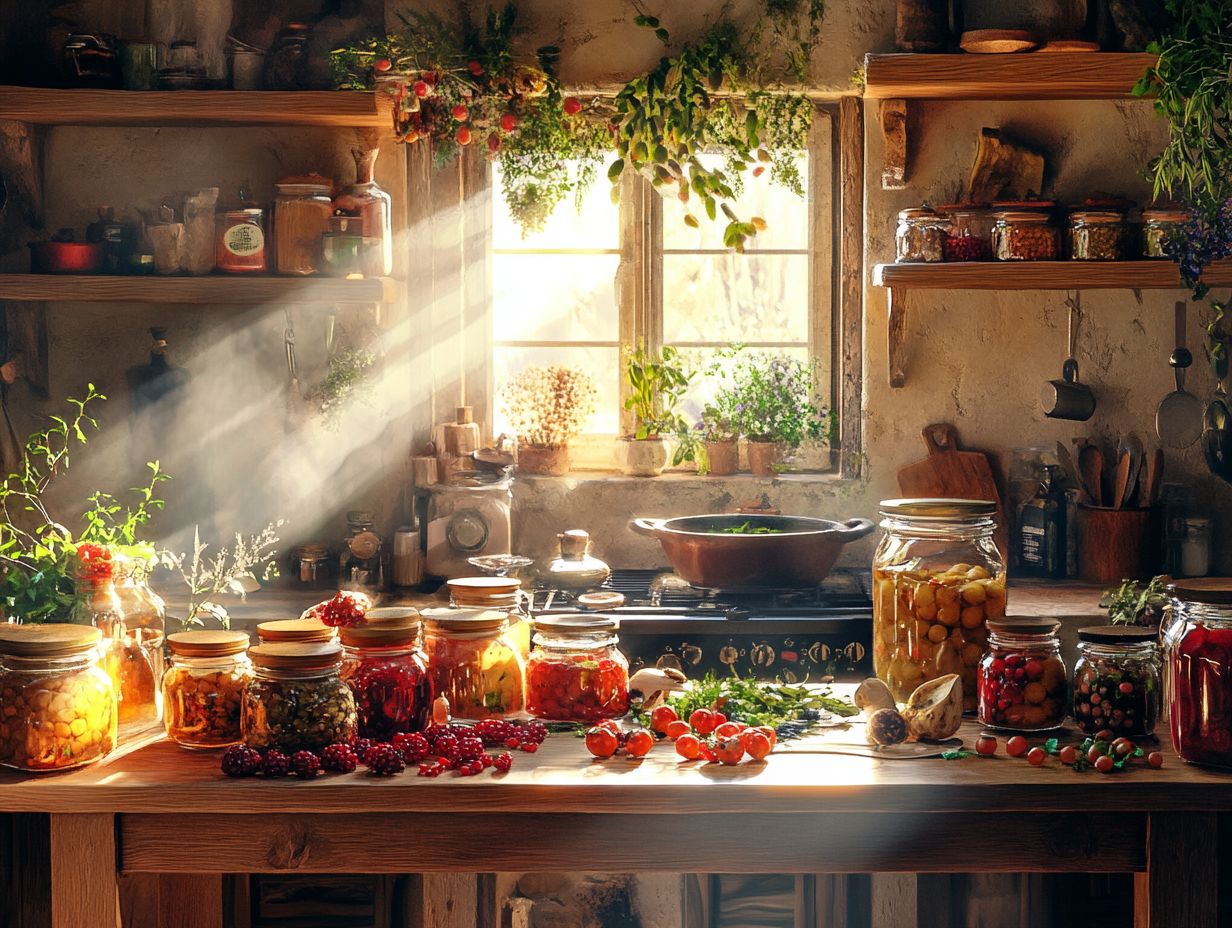
What is foraging and why is it important?
Foraging is the act of gathering wild food sources from their natural environment. It helps you connect with nature, promotes sustainable living, and allows you to discover new, nutritious food sources.
How do I properly preserve my foraging finds?
To preserve your foraging finds, first clean them thoroughly to remove any dirt or debris. If you’re interested in teaching others, consider exploring how to share your foraging skills. You can then dry them out or freeze them to prolong their shelf life.
What items can I forage and preserve?
- Berries
- Mushrooms
- Herbs
- Nuts
- Meat, fish, and vegetables from hunting or fishing trips
Do I need any special equipment to preserve my foraging finds?
While not necessary, having a dehydrator, vacuum sealer, or canning equipment can make preservation easier and more efficient. Basic kitchen tools like a knife, cutting board, and jars also work well for storage.
How long can I store my preserved foraging finds?
The shelf life of your preserved foraging finds depends on the type of item and how well it was preserved. Dried items can last several months to a year, while frozen items can last several months. For those interested in ensuring sustainability, following the guidelines in sustainable foraging best practices can help ensure that properly canned items last for years.
Are there any safety precautions I should take when preserving foraging finds?
Yes, properly identify and research any foraged item before consuming or preserving it, as some may be toxic or require specific preparation methods. Use clean and sanitized equipment to ensure safety.
Start foraging today to uncover natural ingredients that can elevate your meals! Share your foraging experiences with us!


